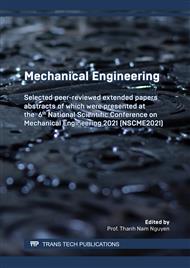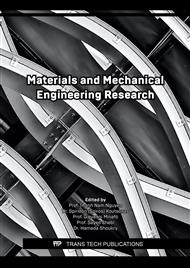p.45
p.55
p.69
p.79
p.89
p.101
p.115
p.131
p.145
Design and Manufacture of Welding Fumes Electrostatic Precipitator and Parameter Study on Filtration Performance
Abstract:
Currently, the fumes and dust generated from metal cutting and welding are not often treated well in many factories. This paper presents the results of designing, manufacturing the welding fumes filter system by applying electrostatic precipitator methods as well as studying the factors affecting performance of filters. There are many factors that affect the efficiency of electrostatic precipitator filtration, in this study, the welding fumes filter was experimented with parameters of gas flow velocity, filter pipe diameter and power capacity to find out the appropriate parameters. The outlet air quality was measured with a dust concentration gauge and the Box-Behnken method was used to determine the relationship among experimental parameters. The filter parameters are optimized to achieve 99% of filtration efficiency. The research results will be applied in practice to ensure the health of users and improve the surrounding environment as well.
Info:
Periodical:
Pages:
115-129
Citation:
Online since:
June 2022
Authors:
Price:
Сopyright:
© 2022 Trans Tech Publications Ltd. All Rights Reserved
Share:
Citation:



